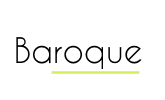All of the following
images open in a new window for a detailed study.
There are not very
many pictures showing parasols, but they are certainly there. This isn't
a surprise, because when the Dutch started colonising the East Indies
they came across these convenient items and surely brought them back over
to Europe. Apart from this parasols have been known throughout the ages
but with different impact on different societies.
By the late 1690s there is an English advert for parapluis, and this French
word means an umbrella in contrast to a parasol, which is a proof for
parasols having bee adapted quickly for rain. Not only that, in this advert
collapsible umbrellas are praised. The shape of those later umbrellas
or parasols is more like the modern ones.
 1660 1660
Minister Seguier waded by black silk parasols carried by his pages.
The edge is adorned with a deep gold brush fringe. The shape of the
parasol is that of Asian ones still. |
 1662 1662
Page carrying his Lady's closed parasol. |
 1675 1675
A little later, but it still has the shape of the parasols in
the 1660s and this one has a fringe as well, which seems to be obligatory. |
 Late
17th Late
17th
Later parasol, Italian probably 1690s. It is made from silk and
embroidered with coloured silks and gold thread. |
 The
parasol I had made in Thailand. It was made from a thick blue silk
and I had the handle lengthened, using a nicely turned banister. The
gold metal brush fringe was added by myself. The
parasol I had made in Thailand. It was made from a thick blue silk
and I had the handle lengthened, using a nicely turned banister. The
gold metal brush fringe was added by myself. |
 The
fringe is so heavy that it pulls the parasol down into a more domed
shape. The
fringe is so heavy that it pulls the parasol down into a more domed
shape. |
|









